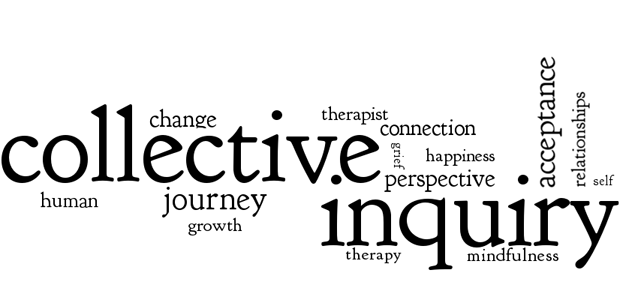

“Happiness doesn’t lie in change, it’s in acceptance.”
We’ve touched on the theme of self-acceptance before here at CI, but lately I’ve been running into it again through several conversations with people over the last couple of weeks. Basically, the formula that we tend to believe will bring happiness is: I will be happy when I change ________ about me. A lot of times the blank is filled in with things like losing weight, getting in shape, getting over “it”, or moving on. The problem is, how can we change anything about ourselves when, by wanting them to be different, we separate ourselves from them? If I can’t stand the way that I push others away because of feeling insecure, wanting to get rid of that part of me is doing the very thing that’s causing the insecurity: I’m rejecting myself.
Is it any wonder then, when we go headstrong into the latest diet or the newest 3-step self improvement plan, that it doesn’t often work? So many times in doing these plans, they may work for a while, but eventually they’re not maintained or we find that we aren’t achieving what we had hoped. At that point, it becomes a failure, which is just one more validation of what we feared all along–that we are hopeless. The thing is, it really wasn’t us that failed. It was the plan. It was something that likely from the beginning was sending us the message to reject a part of ourselves. So when the plan fails, it actually succeeded. It really succeeds when we are allured by the next version’s message that it works better. Generally, the second version is really the first version, just disguised by new words. When it doesn’t work, we get another message of failure and wait around for the third version or move on to something else, which probably isn’t much different. It is often said the definition of insanity is doing the same thing over and over again and expecting different results.
So instead of sending ourselves messages of failure and rejection, it is important to send the opposite message, that we are–all parts of us– valuable and worthy. This endeavor is one that is difficult to fail because at the beginning, it offers a clear message that self-acceptance is not something that we fully achieve and when we do, we’re good for the rest of our lives. Instead, like happiness, it is a way of travelling. I like how Brené Brown described wholehearted living: it’s like the north star, you never fully arrive, but you know when you are heading in the right direction. Self-acceptance is similar. It’s something that we always work toward. Sometimes we stray, but we can always get back on course. Even getting back on course is an act of self-acceptance. There are so many fail safes in practicing self-acceptance. All that matters is that we have self-acceptance as a direction in mind as we go through life.

Image by boogy_man
Self-acceptance doesn’t mean we excuse parts of ourselves that hurt us or others. It means recognizing that they are a part of us and then exercising self-compassion. Once we do, we no longer desire to change, but we desire to grow. The reason for growing is to better ourselves because we care about all aspects of our being as well as others. It seems to me that the reasons for change are to get rid of undesirable characteristics. One is healing, the other is defeating. One focuses on the process or journey, the other on an end goal which may never be reached.
Share your thoughts
No Thoughts About Happiness and change